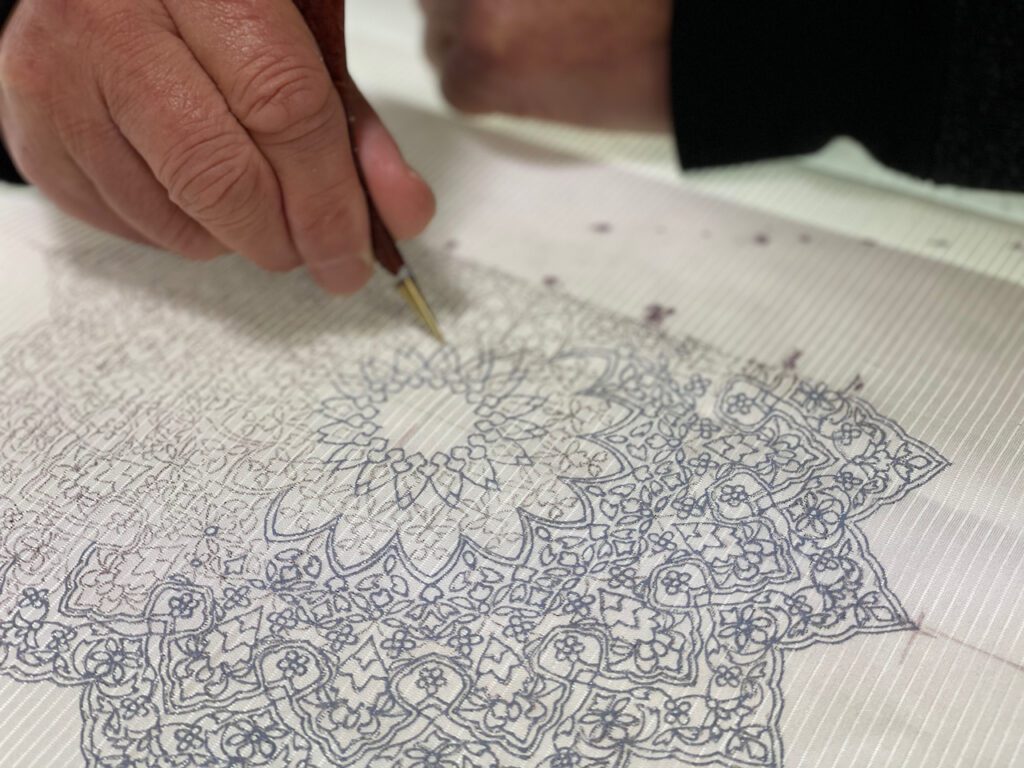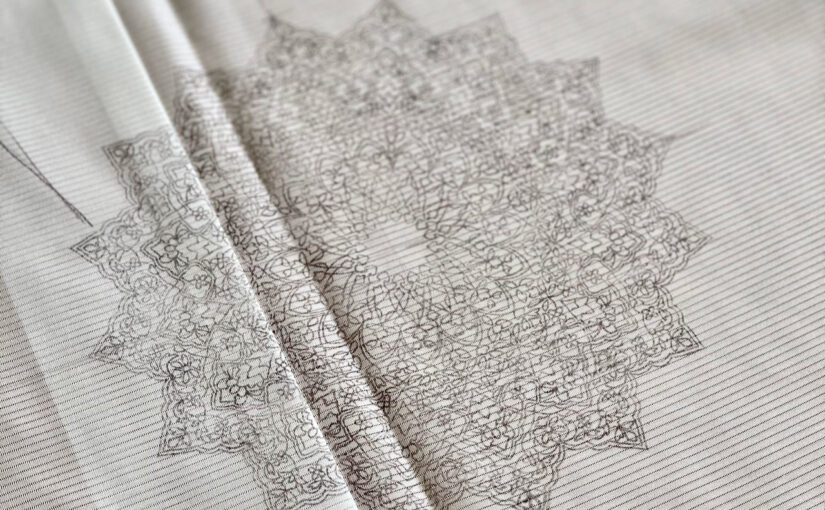We Love Kimono Project 7
With the Medashi of my Obi complete, Kosaka-san, the kimono maker using Tegaki Yuzen, a hand-dyeing method, started his work of making my kimono.
Tegaki Yuzen 手描き友禅 is a resist-dyeing technique that became fashionable at the end of the seventeenth century in Japan. Applying paste dye directly to fabric to prevent color transfer to other areas, Yuzen technique enables freehand designs with multiple colors.
Sketch the Design

The first step is to sketch a design on the white fabric using aobana ink. Extracted from commelina communis, also known as Asiatic dayflower, aobana ink is soluble in water. The two photos above are Kosaka-san’s sketches on the kimono fabric.
Following the Islamic Flower design of Katsuyama-san’s medashi of my Obi, Kosaka-san adds his own interpretation to the Yuzen design.
It may not be obvious from the photos above, but did you notice that the white fabric is already sewn together?
Kimono fabric is long and narrow. It is cut into eight pieces and sewn together in the shape of a kimono. The design pattern of a Homongi runs through different pieces. In order to make sure that the design patterns align perfectly across the different fabric parts, the eight pieces are temporarily stitched together before sketching the design. After the sketch with aobana ink is done, the pieces are disassembled and stitched back together to the original long, narrow shape.
The sketch with aobana ink is complete. Kosaka-san disassembled and stitched back the kimono fabric into the long narrow shape.
Itome-oki 糸目置

The next step is to directly place paste dye on the lines of the aobana ink sketch.
Similar to how a baker uses a pastry bag to decorate a cake, the craftsman squeezes the paste dye out of the nozzle. The very small nozzle makes it possible to dye very thin lines with precision. Unlike aobana ink, the paste dye is, literally, dye. It can’t be washed away once placed on the fabric. One fumble can mess up the whole thing.
It requires years of practice to squeeze out paste dye in a consistent way to dye such fine lines. This process is called 糸目置Itome-oki. Itome means “thread pattern,” depicting the very fine lines like a thread. This is the most distinctive feature of Yuzen technique.

